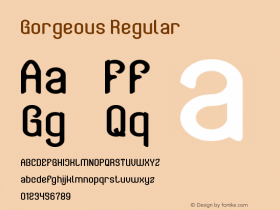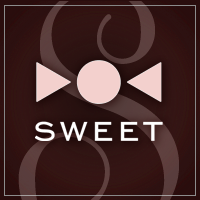
Oops, there seems to be some confusion regarding this series. Lately I have had a number of questions why such and such movie poster hadn't been included in the ScreenFonts overview of a specific month. While I do skip forgettable designs – I have to be able to write something even remotely worth reading about any poster featured in the list – the questions were about posters that I did include… the next month. Same as with the My Type of Music posts I gather all the posters by the end of the month, and write the post in the second half of the next month (the first half is dedicated to My Type of Music). So although this instalment was posted on October 30, the posters discussed below all are for movies released in September (the URL gives it away). Now I understand this makes more sense with album covers than with movies, as the latter have a shorter shelf life. By the time this episode goes live some of the movies will have disappeared from the screens already. If you'd prefer to have the movie posters discussed at the beginning of the month or on a weekly basis, let me know in the comments. I'll see what I can do.
On a related note, remember I announced this summer that I was going to start looking at the European (primarily Dutch and Belgian) movie releases again? After all this is how the ScreenFonts series originally started, on my other blog on the BeNeLux side of FontShop. Well, it looks like I've taken the next step in my attempts at rebooting ScreenFonts on Unzipped. If you want to see some posters for movies being released at my side of the Atlantic, you can read the European counterpart to this post. I am not sure if I will manage to assemble enough interesting material on a monthly basis without overlapping with this series on The FontFeed to keep it as a regular feature on Unzipped. So no real commitments yet, but one can dream.
Reading The FontFeed over the past two years may have given you a pretty good idea of what kind of a person I am, and how my mind works. I aspire to be an attentive and considerate husband, a caring and loving father, an understanding and sensitive friend. I like art, literature, theatre, and movies that make you think. However there's this one teensy little detail. No way on earth can you negate the Y-chromosome in me that yells "Badasss!" at the mere sight of a grisly, knife-wielding Danny Trejo staring you down through a mist of sparks on the main poster for Machete, Robert Rodriguez's long-awaited Planet Terror spin-off. It's big, loud, dumb, and brash, but how could I not love it? Genetic programming, primordial instincts, all that kind of reptilian brain stuff, you know.
Continuing this train of thought, one year ago. The type treatment in two of the posters is exactly the same as in this one, yet the overall designs mimic 1970s artwork so well that everything clicks. Especially the alternate posters sealed the deal for me. As the 1970s style is utterly believable it makes sense that a genuine period face was used.
Yet the poster above is a modernisation of said genre – one could never mistake it for a vintage design. In that case I prefer a similar re-imagining of the typography. Designers/art directors should always go to that extra length to analyse the specific style they want to emulate. Only by stripping away all the cosmetics one can truly understand what the core concepts are that create that particular atmosphere, like the ingredients to a recipe. Instead of piling up genre clichés and assembling a Frankenstein monster consisting solely of style but no content, deconstruct then rebuild using a consistent, contemporary graphic language. In that respect Rian Hughes' stencil slab serif Payload Narrow for the credits at the top is a much more appropriate choice.
To further prove my point this "pulp fiction" version is perfectly consistent. The three-dimensional block of Aachen looks perfect on this poster, as do the credits and tagline, also set in Aachen.
Character posters for this type of movies are always great fun, as the studios often go all out with the images and/or taglines. These ones follow the general make-up of the main poster, creating a harmonious series. The only one that bothers me is the Lindsay Lohan poster. Not that I am offended by a nun sensuously licking the tip of a phallic symbol, a really big gun. Remember I am European and do have a sense of humour. No, I suspect this one is ripe for Photoshop Disasters, for Lindsay must have a very long upper arm and very short lower arm. Either that, or she has a neck built like a giraffe.
Another foray into vintage territory is the stylish movie poster for crime thriller The American. The visible raster of the woman's overexposed portrait, the flat orange area and off-white border, and the coarsely dithered black-and-white picture of George Clooney running out of the canvas all scream 1960s to me. It is a very convincing imitation – not interpretation – which makes Compacta (released in 1963 and hugely popular at that time) a logical choice.

Similarly to the posters for Twelve and Animal Kingdom featured in last month's overview the movie logo for The American also incorporates a human silhouette. Because the logo itself is positioned in relatively calm area, it doesn't suffer from any visual static created by graphic elements surrounding it. This makes this solution work much better than the two aforementioned movie logos. The squarish, compact letter forms frame the silhouette very efficiently. I do have a reservation though, and I have to warn you I am entering nitpicking territory here.
As soon as a foreign shape interacts with characters you have to carefully assess how exactly the character outlines are affected by said shape. Always be prepared to adapt those outlines accordingly. Here the spiky top of the bottom triangle in the "N" sticks out of the person's head, as if he had been felled by sharp object planted in his head instead of shot down. The two possible solutions I see require some "out of the character shape" thinking. The most obvious is to simply get rid of that remaining fragment of the bottom triangle. It doesn't make the "N" any less legible, and renders the silhouette less ambiguous. An alternative would be to enlarge the silhouette so its head comes as high as the top of the bottom triangle. (It still may need to be removed as the silhouette's head probably would have shifted to the right.) Then the little white shape between the legs would be situated between the "A" and the "N", theoretically in the orange area. But I doubt anyone would mind because it would look right.

I'd like to illustrate my point with an example: a fictitious logo I quickly composed using Oxtail, Stefan Hattenbach's lovely re-imagining of the Clarendon model. I extended the serifs to have the individual character shapes connect.

If I had literally extended and connected the serifs, and left them as they were, they would have filled up portions of the counters. This can be clearly seen here at the bottom of the "O". Although this solution is geometrically correct, it appears wrong because the straight line segment corrupts the shape of the letter form, interrupting its flow.

Instead I made sure that the counters were untouched (the yellow area indicates the difference). Although purely geometrically that precise spot is less wide than the serif width, the resulting shape looks correct and feels much more harmonious. Just a detail – besides removing the overshoot of the "O" and "C" I also adapted the top left serifs of the second "N" and the "E". They were copied from the right stem of the "N", as their original shape didn't allow for a smooth transition into the serif extension.
The two variant posters for the documentary The Tillman Story tackle the controversial story in appropriate ways – pro football player Pat Tillman, who left the NFL to enlist in the U.S. Army after 9/11, was killed two years later, and his family set out to reveal the truth behind the events that claimed his life. The movie poster on the left plays off the theme of censorship from the military. The recognisable image of a letter with blacked out words and sentences is overlaid on the rasterised identity shot of Tillman.
The potential controversy is toned down in the version on the right. Here the portrait is enhanced with patriotic red, white and blue. Ripping away a central band of paper to accommodate the movie title and tagline is a clever move. On a side note, some comments on the IMPAwards website complained that the colours made it look like the French/Dutch flag instead of the American stars'n'stripes. Frankly, I think adding (a) star(s) in the blue area and/or turning the red area into stripes would weaken the impact of the image, and even cause Tillman to look like a clown, so making it "more American" doesn't seem like a good idea to me.
Both movie titles are set in Gotham – at the left the Condensed and at the right the regular width – which has become nigh inescapable.
There really is not much hope for romantic comedies, is there? Either they stick to dime a dozen formulas, the best-known being the horizontal bands with Didone type, or they cook up some contrived feel-good and/or humoristic image. The latter applies to the movie poster for Going the Distance. Having the background and type – Agency – painted on a wall is a little too much "Look Mom, no hands" to me. I can't discern any thematic link with the movie's story. The only purpose the wall serves is that it allows the two main actors to, you know, lean against it.
This is another candidate for Photoshop Disasters. Drew Barrymore's right shoulder indicates her hand should be on Justin's hip or lower back, not up there. And would there be any room for her right arm anyway, without it being crushed by Justin's left arm pressed against the wall? Ah, the mysteries of the human anatomy…
The Blue Note-style treatment of the photograph is bold and appealing. However the distressed serif face Caslon Antique doesn't seem like the best choice. It's like this Chinese restaurant in Gent that had its name "King's Garden" in an Old English blackletter – the cultural reference is all wrong.
Now please don't misunderstand me. I am not suggesting to go all faux Asian. That may have worked in the Art Deco days, but it is now perceived as insensitive cultural stereotyping. However I think there is room for a subtle reference to Far Eastern calligraphy, like Baker Signet, Palatino Sans Informal, or Gizmo.
The movie poster for spots comedy The Winning Season was included simply because it's unpretentious, cute, and funny. I never would've thought a basketball parquet floor would make such a great background. The colourful cut-out photographs arranged around the big orange basket ball, augmented with the white doodles create a lovely, joyful lay-out. The type for the movie title looks like it was cut out of paper, which suits this design perfectly.
Once again I am blown away with the work of Kellerhouse. As I was quickly running through the September movie posters to already have a rough idea what to write about this episode, one design instantly jumped out and grabbed me. As I thought it was head and shoulders above the others – except maybe the Never Let Me Go posters – I checked who designed it. And guess what? It is a Kellerhouse design. Again. I don't understand how they manage to be so consistently fantastic.
And yet the movie poster for the documentary I'm Still Here is so deceptively simple. Basically it's a detached and scruffy looking Joaquin Phoenix looking at the audience through dark sunglasses, with overlaid type. Everything happens in the details. Because of the greyish hues the photograph looks veiled, as if we're looking at the actor through some sort of haze. It seems to suggest he is slowly disappearing, but not quite yet; like greyed out items on a website indicating something was once available. Similarly the letters of the semi-transparent movie title set in all caps Didot are partially erased. The composition of the type, with the outermost serifs blending in the white border, is just perfect. One gets the feeling that Joaquin peers through veil and type, reassuring us that we might have thought he was gone, but no: "I'm still here". Why shout when you can whisper so convincingly? Powerful stuff.
Now this is weird. The movie poster for the romantic drama The Romantics adopts the tired horizontal band cliché, yet subverts it by combining a garish fuchsia with black instead of the customary light background. The typeface is also quite unexpected – Ziggurat from the Proteus Project co-ordinated suite of typefaces is quite brash in comparison to the refined Didones we usually find on this type of designs.
In these times of crass commercialism in the movie business – boy do I sound like an old fogy – a poster that does not flaunt the big name actors starring in the movie it advertises must be commended. Such an approach pays dividends, as it makes it stand out amidst al those other cliché posters. Although it boasts two Academy Award nominees, the theatrical poster for dystopian thriller Never Let Me Go eschews the floating heads template, and doesn't even show recognisable faces of the starring actors. Without giving away any real information about the plot, it depicts an emotional scene that sets the general atmosphere and tone of the movie. This leaves the viewer intrigued, which ultimately is the best a good movie poster can hope to achieve.
The art direction is superb. Having the two actors run away from the camera on a desolate pier lends the image a sense of anxiety, of quiet dread. The colour palette is moody and seems slightly off, yet stays believable. I really like the typographic treatment of the movie title. Parts of characters of the Light weight of Apex New were cut away. The missing connector on the "R", the two disconnected halves of the "M", and the bottom portion of the word "GO" floating away create a bittersweet feeling of separation, of parting. I am quite impressed with this display of tasteful and restrained experimentation.
I am almost inclined to say that this series of gorgeous teaser posters is even better. Here the bizarre colour scheme of desaturated greens, purples, and skin tones hints that something is not right in the world depicted in this film. Quite daring is the fact that the movie title was broken up over the three posters. It can be read correctly solely when all three posters are seen together and in the right sequence. The full title is only mentioned once, very small in the credits at the bottom. These are set in a skyline sans that looks like FF City Street Type Berlin East Regular, but even lighter and narrower (FF City Street Type is rereleased in OpenType format in exactly one month).
The two months ago. Not that they look the same; they employ similar graphic devices. In the Rec2 poster the red eye refers to the red dot which is the universal symbol for "record". In this entirely black poster the eye is irrevocably drawn to the elevator "Down" button lit-up in red. It cleverly substitutes for the "V" in the movie title set in Eurostile. A very effective minimalistic poster.
The theatrical poster expands upon the concept. It is as if the fires of hell are burning behind those elevator doors, and the red hot glow seeping through the chinks between and underneath the elevator doors, in combination with their reflection on the shiny floor, create an upside-down crucifix. Eurostile is not my preferred typeface, but in this context it works quite well. Still I wouldn't have minded an alternative.
When it comes to leaving the audience puzzled, the poster for indie romantic comedy Jack Goes Boating does a fine job at not giving any clues about the theme of the movie. The photograph shot from directly above Philip Seymour Hoffman's boat creates an almost abstract design. The shape of the boat, the reflection of the light in the intense dark blue water, and the all caps Helvetica typography in the top right corner seem like a cerebral exercise in composition. As it is devoid of any emotion there is no connection with the viewer, which makes it a bit hard to feel involved with this design.
Even more obtuse is the movie poster for documentary Catfish. The striking image offsets a red, crudely painted fish silhouette with the movie title reversed out against a white oldskool computer pointer arrow on an entirely black canvas. In this case it all makes sense because the description on IMDB ends with: "Do yourself a favour and read as little about this story as possible before going into the theatre." This poster reminds me of music design from the late 80s–early 90s.
People may think I have an obsession with chiaroscuro – I normally use the French clair-obscur – I can't help it this effect has popped up a number of times lately. To be honest I just like to show off I studied at an art academy; makes me sound posh. ; ) Another instance is this movie poster for financial drama Wall Street: Money Never Sleeps, the sequel to the classic Michael Douglas-Charlie Sheen-Daryll Hannah team-up from 1987. The poster image looks like a classic official portrait of a statesman and his heir apparent. Were it not for the clothes it could be mistaken for a painting by Caravaggio or early Rembrandt.
Composition-wise it looks a bit like a mash-up of the posters for the original Wall Street movie and Devil's Advocate. Typographically speaking it is a lot better. ITC Fenice has a dignified, stately appearance, unlike the horribly stretched ITC Century in the former poster, or that crappy customised serif face in the latter. The credits are set in the obligatory Gotham.
I think we can all agree that the movie poster for You Again is standard Hollywood comedy fare: the stars on a pristine white background in a "less funny than it purports to be" set-up. The only thing of interest is that setting "You" in the movie title bolder and in red makes you instinctively stress the second word. Try it, you'll see. The wide grotesque is Standard/Akzidenz-Grotesk Extended.
Again a very standard image on the movie poster for the computer-animated fantasy feature Legend of the Guardians: The Owls of Ga'Hoole. The slightly baroque character shapes of ITC Golden Cockerel Initials lend themselves very well for this type of three-dimensional ornamental treatment.
Much in the same vein of the one for Devil mentioned a little earlier, the teaser poster for claustrophobic suspence thriller Buried is a largely black poster with a brightly coloured section of the buried man in his coffin. The follow-up teaser poster simply adds the movie title reversed out in Helvetica and some credits. As promotion campaigns go this is a very efficient one. Having the coffin quite small at the bottom, as if it were caving in under the crushing weight of the entirely black poster, nicely encompasses what the movie is about and gets across the feeling of despair and claustrophobia.
The design of the theatrical poster builds on these teaser posters, zooming in on the man whose frenzied state is visualised by having his head blurred by motion. A fortnight ago I was railing at the ill-inspired use of a lamp for an "O" in the album title for Neil Young's latest album Le Noise. This design however shows how to properly do this. The flame of the lighter creates a perfect substitute for the "I" in the movie title. The rest of the word is set in Futura caps. Distressing the bottom of the letters gives the impression they are being covered by dirt, as if the movie title itself is being buried.
Quite unexpectedly the collaterals for this movie also include this Vertigo-inspired variant design. The sequence of spiralling rectangles really brings home a sense of depth. It feels as if we're looking with X-ray glasses through layers of earth at the buried man.
This same graphic device is revisited and expanded upon in this alternate poster. Here the rectangular downwards movement is made of reviewers' quotes set in Helvetica Condensed.
Quite uncharacteristically for a documentary, the movie poster for Waiting for Superman received the Hollywood blockbuster treatment. The bleak colour scheme of the almost airbrushed image mirrors the message of the movie, and the movie title is set in the inevitable Trajan. As the tagline needed a lowercase for legibility and appropriateness ITC Giovanny was paired to the all caps classic titling face.
This must be the first time I've seen a film maker do a mash-up of posters for two previous movies of his own. The movie poster for Woody Allen's romantic comedy You Will Meet a Tall Dark Stranger borrows the full moon and background from The Curse of the Jade Scorpion, and adds the dark silhouette from Small Time Crooks. I am sorry to say that I don't like the end result, especially since I find said silhouette quite poorly drawn.
Just like on the poster for discussed over a year ago, Allen's preferred typeface for his title credits sequences Windsor does the honours on the poster too.
These two variant posters are quite a departure from the main design; both black on white with a dash of red. The first very first episode of ScreenFonts on The FontFeed two years ago.








